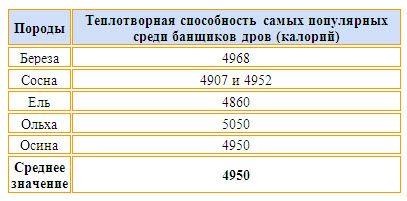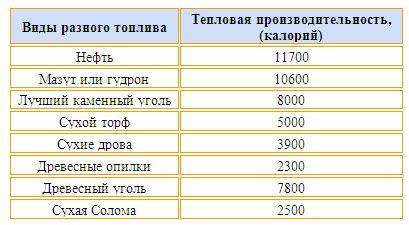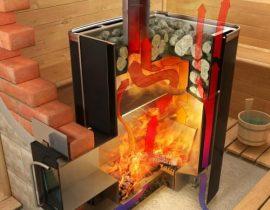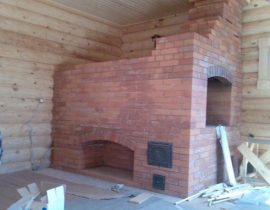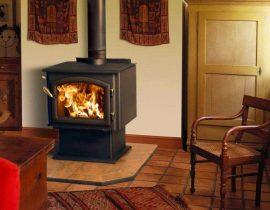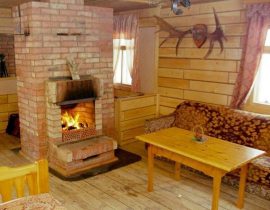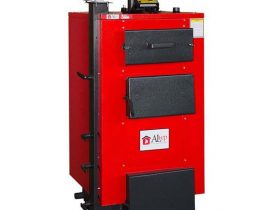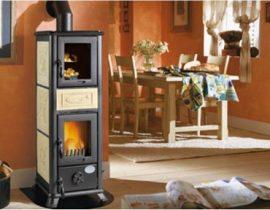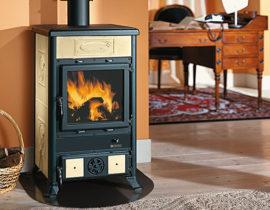Watching a burning fire is one of the most favorite entertainments of a person. However, in addition to purely aesthetic purposes - a burning fire can also perform a purely utilitarian task - to heat the surrounding space and other objects.
One of the most common sources of fire in country houses is ordinary firewood. Surprisingly, the burning temperature of firewood depends on the type of wood and the conditions for burning it. Accordingly, each of the tree species can be used for various purposes, to perform certain tasks.
Content
What kind of firewood can give off the maximum amount of heat?
In order for firewood, and any other organic material to burn, it needs air (or rather, oxygen from the air, but this clarification is not essential). During combustion, the organic matter of firewood, when interacting with oxygen, turns into water vapor and carbon dioxide. The steam is bonded to unburned materials or goes outside through the chimney.
Each type of combustible organic matter, be it oil, gas, coal or wood, has its own special chemical composition. There are also differences in chemical composition and within each type.Just as there is coal with a high and low ash content, there are also types of wood that differ in the temperature released during the combustion process and in the composition of the remaining combustion products.
It is almost impossible to compare the combustion temperature of firewood at home, but in the laboratory, experts were able to conduct such a comparative test. In order to get different starting results, firewood from different types of wood was dried to a certain maximum percentage of remaining moisture.
This point - the drying of firewood must be taken into account for home use: it is clear that raw firewood will burn worse and with less heat. Therefore, the firewood intended for the furnace passes a certain way from the woodpile in the yard, lingering in a dry room or under a canopy to dry.
We note right away that the concept of "burning temperature of firewood" does not accurately reflect the key characteristic of firewood. It would be more correct to evaluate combustible materials by their ability to release a certain amount of heat. The unit of measure for this characteristic is a calorie - this is the amount of thermal energy that can heat one gram of ordinary water by 1 degree. The table below reflects the key characteristics of various types of firewood according to their calorific value.
What can affect the quality of firewood as a fuel?
The most negative effect on the calorific value of firewood is the water contained in it. During life, any wood contains water, which is extracted by the roots of plants.With a high moisture content of wood, the thermal energy released during combustion will be spent not only on useful purposes (for example, heating a room, cooking or heating water in a bath) but also simply on evaporating moisture from wood.
To understand the problematic situation, we note that if wood (practically any) contains only 15 percent moisture, then its calorific value decreases to 3660 calories. And now compare this figure with the indicators given in the table and it turns out that using wet firewood is the same as throwing out some of it before placing it in the firebox.
The losses determined by the moisture in the wood are so great that the equivalent of 15 percent moisture evaporation in a kilogram of firewood is enough to heat about 10 liters of water to a boil.
What types of firewood are most loved by the people
The most popular and effective, based on popular experience, can be firewood harvested from beech, hornbeam, oak cut down in winter, mountain pines, common acacia and, of course, birch.
The hottest flames are firewood harvested from ash, maple, resinous larch, plain pine and oak cut down in summer.
Slightly lower heat generation is shown by firewood harvested from spruce, fir, cedar and chestnut.
Well, absolutely bad firewood is obtained from linden, alder, aspen, willow, poplar.
As it has already become clear, the most efficient in terms of heat generation are firewood made from dense, heavy wood. By the way, a tree with a low coefficient of heat generation is perfect for making shelves and utensils from them in the bath.
How is wood burned?
Not all wood burns the same way.Some of them disappear almost completely in the furnaces, leaving only a handful of ash in their place. Others smoke long and tediously, clogging the entire furnace space with the remnants of their combustion.
The speed and completeness of firewood combustion also depend not only on the chemical reactions occurring in an open flame, but also on the design of the stove. High-quality stoves have a rather complex device, which includes many elements, such as a spool and a blower, a firebox and grates.
The completeness of combustion of firewood will also be affected by their breed, as well as (to a very significant extent - specific humidity).
But strictly speaking, to calculate thermal devices, they usually do not take into account the different characteristics of firewood harvested from different types of wood. For calculations, the average value is taken, which is 3800 calories for wood.
Which wood burns hotter than others?
In addition to the calorific value, which characterizes the amount of thermal energy released during the combustion of firewood, in the course of practical life we may also be interested in heat output - that is, the maximum temperature that can be achieved in the furnace when burning one or another type of firewood.
Various types of fuel and various breeds trees burn in different ways. Some of them can give an even and high flame, while others will show a low fire, but show a high temperature directly in the burning area.
There are two main points that affect the temperature produced by firewood when burned.
First of all, the combustion temperature depends on the intensity with which oxygen enters the furnace, which is necessary for combustion.This indicator is usually determined by the design of the furnace itself.
The design of the furnace itself also affects the temperature.
Stoves and furnaces can be created from different materials. And each of the materials can affect the combustion temperature of firewood in a special way.
In a massive stone oven, firewood burns almost completely, but this process takes a relatively long time. On the other hand, a potbelly stove, that is, a firebox made of a thin steel sheet, cools down very quickly, distributing heat to the surrounding space. At the same time, heat from the combustion zone is constantly transferred to the walls and further into the room. As a result, firewood in such stoves burns almost without residue.
How to measure the combustion temperature of firewood?
It is unlikely that you will be able to measure the combustion temperature of firewood with an ordinary thermometer. Moreover, it is a completely lost business to determine the combustion temperature “by eye”. In order to conduct such studies, it is necessary to stock up on a special device - a pyrometer.
But note that the highest burning temperature of firewood does not mean at all that firewood of this type can give off more heat.
Note that in good combustion devices, for example, in closed fireplaces, it is possible to artificially reduce the supply of oxygen from the air to the burning wood, thereby achieving an increase in the combustion temperature and a decrease in heat transfer.
For comparison, you can look at another table that reflects the calorific value of various types of fossil fuels.
A few practical tips
If you feel that in the room in which the stove is located with the firebox door tightly closed, it smells of wet firewood - check the integrity and tightness of the stove equipment.
Please note that combustion products contain a lot of acids, so chimney pipes must be made of materials that are resistant to aggressive environments.
Clean the chimney after using firewood with a high resin content.
To heat stones, for example for a steam room, it is better to use firewood that burns weakly and supplies heat gradually.
If you need to quickly heat a steam room, use firewood with a high combustion temperature and increase the air supply to the firebox.
Furnace temperature measurements: video


